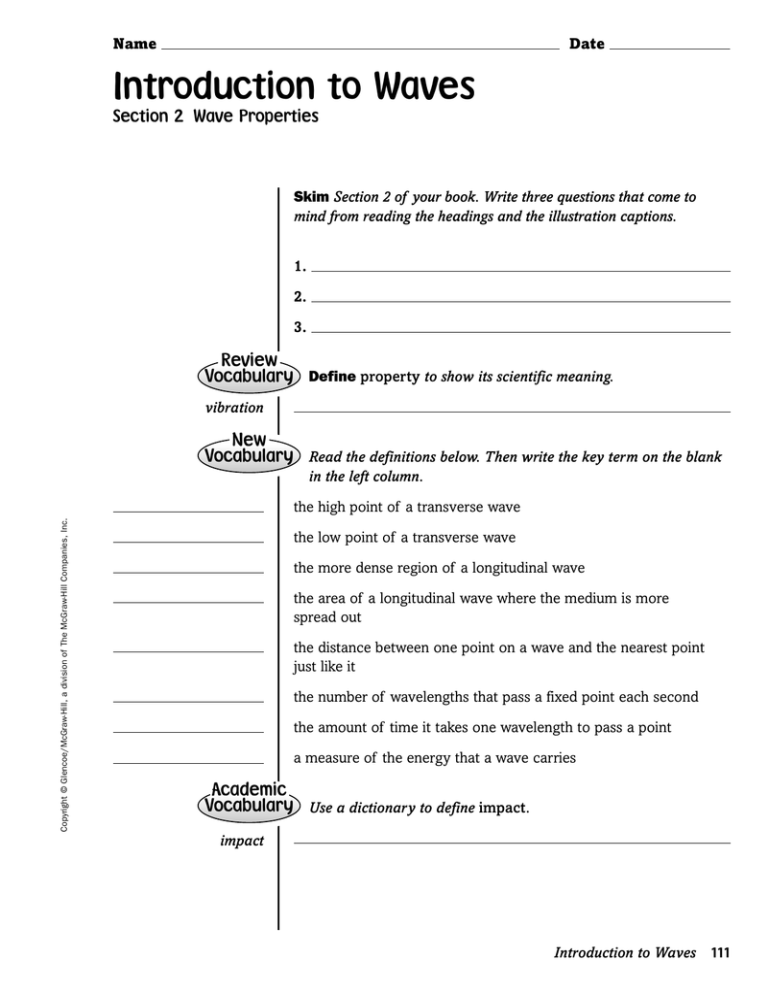Introduction to Waves
advertisement

Name Date Introduction to Waves Section 2 Wave Properties Skim Section 2 of your book. Write three questions that come to mind from reading the headings and the illustration captions. 1. 2. 3. Review Vocabulary Define property to show its scientific meaning. vibration New Vocabulary Read the definitions below. Then write the key term on the blank in the left column. Copyright © Glencoe/McGraw-Hill, a division of The McGraw-Hill Companies, Inc. the high point of a transverse wave the low point of a transverse wave the more dense region of a longitudinal wave the area of a longitudinal wave where the medium is more spread out the distance between one point on a wave and the nearest point just like it the number of wavelengths that pass a fixed point each second the amount of time it takes one wavelength to pass a point a measure of the energy that a wave carries Academic Vocabulary Use a dictionary to define impact. impact Introduction to Waves 111 Name Date Section 2 Wave Properties The Parts of a Wave, Wavelength (continued) Model two transverse waves. Make the wavelength of one three times as long as the other. Identify a crest, trough and wavelength for each wave. I found this information on page . Frequency and Period I found this information on page . Complete the flow chart to help you understand the relationship between frequency and wavelength. When the frequency of a wave the wavelength of the wave increases, 112 Introduction to Waves Copyright © Glencoe/McGraw-Hill, a division of The McGraw-Hill Companies, Inc. Model two longitudinal waves, one with a wavelength twice as long as the other. Identify a rarefaction and compression in each wave. Label the wavelength. Name Date Section 2 Wave Properties Wave Speed I found this information on page . (continued) Evaluate the speed of an ocean wave that has a wavelength of 4.0 m and a frequency of 400 Hz. f vf v v Amplitude and Energy Copyright © Glencoe/McGraw-Hill, a division of The McGraw-Hill Companies, Inc. I found this information on page . I found this information on page . m/s Compare two longitudinal waves by drawing them. One wave should have more energy than the other. Label the energy of each wave. Identify how the amplitude of a transverse wave is measured. Make a sketch to show your answer. CONNECT IT Contrast the amplitude and energy of the sound waves you make when you shout across a room with the sound waves you make when you speak softly. Introduction to Waves 113




